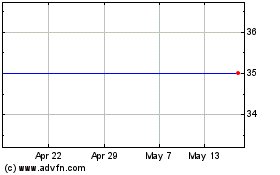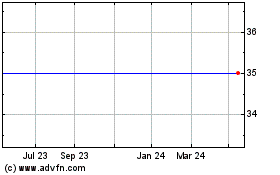TIDMSRX
RNS Number : 8160S
Sierra Rutile Limited
22 March 2016
Sierra Rutile Limited
Sierra Rutile Announces Improved Economics for the Sembehun Dry
Mine
London, UK, 22 March 2016: Sierra Rutile Limited (AIM: SRX)
("Sierra Rutile") is pleased to announce the results of its
pre-feasibility study (the "PFS Study") for the Sembehun Dry Mine
which is intended to extend the life and scope of operations at its
fully-permitted Sembehun group of deposits. The operation would
have the flexibility to operate at either a 500 tonnes per hour
(tph) or at a 1,000 tph rate of throughput.
The PFS Study, undertaken by third party DRA Projects (Pty) Ltd.
and Sierra Rutile, provides further certainty that the Sembehun Dry
Mine is value-enhancing and capital efficient. Compared to the
previously released Scoping Study announced on 1 June 2015, the
current PFS Study supports reduced levels of capital expenditure, a
shortened lead-time and improved economic returns. Furthermore, the
PFS Study is in-line with the continued transition of Sierra Rutile
to a market-led business model with the flexibility to align
production to long-term demand hence focusing the business model on
maximising sales profitability.
Highlights
-- Large resource base: The PFS Study supports economic dry mining of a significant resource
base totalling 3.6 million tonnes (Mt) of contained rutile at an average in-situ rutile grade
of 0.98%.
-- Meaningful, flexible production growth: Sembehun Dry Mine represents another sequential stage
in Sierra Rutile's dry mining operations. The 1,000 tph operation contributes on average 71,000
tonnes of rutile per annum over a 21 year mine life. The mine will consist of two, separate
500 tph concentrator plants.
-- Lower capital intensity: Upfront estimate of $72 million for the first 500 tph unit. Total
capital for a 1,000 tph operation of $99 million has reduced by approximately 22% in comparison
to the previous Scoping Study estimate. The operation retains flexibility to accelerate ramp-up
by constructing two 500 tph units concurrently, gaining further capital efficiencies.
-- Improved economics(1,3) : The PFS Study supports robust economics at consensus pricing with
an after-tax IRR of 66% and an after-tax NPV(10%) of $224 million for a 1,000 tph operation.
This is an improvement over the previous Scoping Study, which generated an after-tax IRR of
33% and an NPV(10%) of $152 million.
-- Low cost of production: Sembehun Dry Mine as a 1,000 tph operation has an average mining cash
cost(2) of $343/tonne rutile over the life of the mine, comparable to Sierra Rutile's existing
mining operations.
-- Low-risk execution: Sembehun Dry Mine will have an almost identical design and configuration
to Gangama and Lanti Dry Mining operations, enabling Sierra Rutile to leverage its proven
experience in constructing dry mining projects on-budget and on-time.
-- Production flexibility and optionality: Dependent on market conditions, the PFS Study
confirms
the Sembehun group of deposits can support a variety of throughput options. The two 500
tph
units can be brought online either simultaneously or in stages in order to respond to
prevailing
market conditions.
-- Next Steps: Sierra Rutile will now focus on further detailed value engineering, specifically
focused on operational flexibility, capital cost reductions and operating cost optimisations.
Commenting on the PFS Study, John Sisay, Sierra Rutile Chief
Executive Officer, said:
"The PFS Study for the Sembehun Dry Mine reaffirms the robust
pipeline of value-enhancing organic growth options within Sierra
Rutile's existing project portfolio. If commissioned, the Sembehun
Dry Mine would be the third dry mining operation constructed at
Sierra Rutile. The experience gained from the Lanti and Gangama Dry
Mines will be leveraged in the construction of the Sembehun Dry
Mine, helping to ensure even greater confidence that the project
will be constructed on-time and on-budget. Moreover, the staged
approach to development allows us to continually evaluate and
optimise the project. As we continue to execute our strategic plan,
we will continue to prioritise sensible growth without compromising
our balance sheet and sustainable shareholder returns."
Project Overview
The fully-permitted Sembehun group of deposits, located 45 km
north-west of Sierra Rutile's existing operations, represent the
largest resource within Sierra Rutile's existing endowment,
containing 3.6 Mt of rutile at an average in-situ rutile grade of
0.98%.
The PFS Study is based on a throughput of 1,000 tph sourced from
an open pit dry mining operation consisting of two 500 tph
concentrator plants, an owner-operated mining fleet, product
haulage vehicles and infrastructure.
The projected life of mine is expected to be 21 years, dependent
on the size and number of units in the final configuration of the
operation. Sembehun Dry Mine is expected to contribute an average
of 71,000 tonnes of rutile per annum as a 1,000 tph operation. The
first five years of operation of Sembehun Dry Mine will mine ore at
an average rutile grade of 1.43%, optimising the large resource
base of the Sembehun group of deposits, and will have an average
mining cash cost of $285/tonne, comparable to Sierra Rutile's
existing dry mining units.
The PFS Study provides a lower upfront capital cost estimate for
a 1,000 tph operation of $99 million in comparison to the Scoping
Study estimate of $126 million as a result of value-engineering,
outsourcing of non-core activities, a reduction in the size of the
proposed earth moving fleet, lower costs envisaged for the process
plant and lower infrastructure costs. These cost savings have been
validated not only through the PFS Study, but also through the
construction of Gangama Dry Mine in 2016, which is currently
tracking on-time and on-budget. The PFS Study expects Sembehun Dry
Mine can be developed in 15 months, with production starting after
12 months. Alternatively, the PFS Study also demonstrates that
upfront capital costs can be further staged by utilising a
two-phased approach to the construction of the two 500 tph
concentrator plants over 15 months. At this time, further
engineering work is being done to assess the option of phasing the
1,000 tph capacity in 250 tph increments to provide further
increased production flexibility.
Project Summary Metrics
Sembehun Dry Mine Summary 1,000tph 500tph
Unit
Avg. annual ore production rate
(LOM) mtpa 7.4 3.8
Avg. grade mined (LOM) % 1.19% 1.19%
Avg. annual rutile production
(LOM) ktpa 71 36
Avg. mining cash cost (first
five years) (2) $/tonne rutile 285 269
Avg. mining cash cost (LOM) (2) $/tonne rutile 343 358
Project life years 21 41
Development capital US$m 99 72
Pre-production construction period months 12 12
Project economics(3) 1,000tph 500tph
Unit
Post-tax NPV (10%) US$m 224 130
Post-tax IRR % 66% 43%
Post-tax payback period years 1.5 2.0
Sembehun Deposit Mineral Resources(4)
Unit
Contained
Rutile kt 3,602
Ilmenite kt 1,006
Grade
Rutile % 0.98%
Ilmenite % 0.27%
1,3 Scoping study economics restated using current consensus
pricing based on broker estimates as at March 2016 compared to
consensus pricing in June 2015 (reduced from $207 to $152
million).
2 Pre-feasibility study mining cash costs are calculated as all
mining costs from extraction, primary processing and delivery costs
of HMC to the MSP divided by tonnes of rutile produced.
3 Pre-feasibility study economics evaluated using current
consensus pricing based on broker estimates as at March 2016.
Excludes fixed costs and maintenance capital expenditure associated
with the MSP and overheads. NPV assumes that Sembehun is
constructed in 2018 with production coming on line in 2019. Taxes
are calculated as 3.5% of revenues.
4 Resources as at 30 September 2015.
Next Steps
Sierra Rutile will continue the value-engineering process to
further optimise and reduce risks around Sembehun Dry Mine. The PFS
Study reflects Sierra Rutile's broader strategy of low-cost,
capital efficient and disciplined growth and reaffirms that Sierra
Rutile has the ability to take this strategy and apply it to a
sustainable long-life operation.
Sierra Rutile does not have a requirement to commence
construction of the Sembehun Dry Mine to maintain its current
production profile over the next five years, but retains the
optionality to quickly ramp-up production as market demand
develops.
ENDS
(MORE TO FOLLOW) Dow Jones Newswires
March 22, 2016 03:02 ET (07:02 GMT)
Sierra Rutile (LSE:SRX)
Historical Stock Chart
From Jun 2024 to Jul 2024

Sierra Rutile (LSE:SRX)
Historical Stock Chart
From Jul 2023 to Jul 2024
